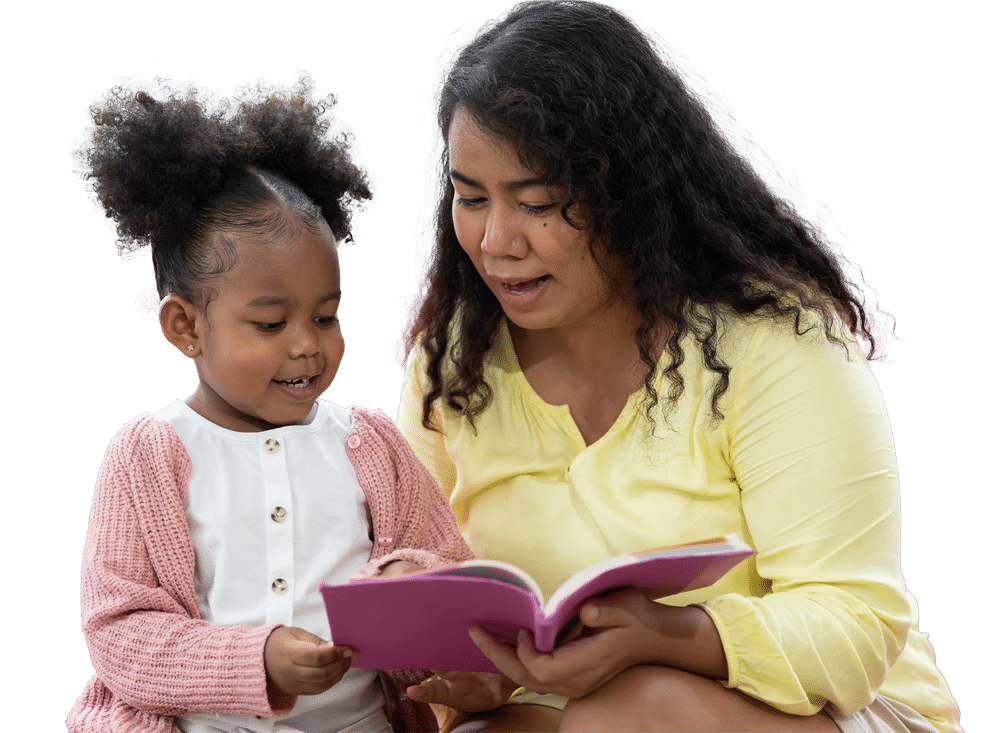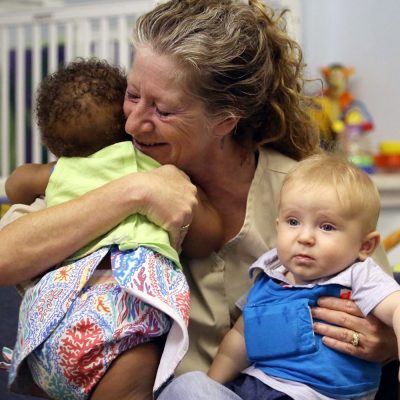The ECE Leader's Guide To Improving CLASS® Scores With LENA Grow
You can’t improve what you don’t measure. If you’re reading this, you likely already know your CLASS scores aren’t where you want them to be.
The good news? You’re not alone. And there’s a clear path forward.
Table of Contents

What Can You Say About Your CLASS Scores?
Keep reading to discover how data-driven professional development can transform your CLASS scores — and your teachers’ confidence.
Note: This page refers to the 2008 version of the CLASS manuals and will be updated when the 2nd edition manuals are more widely adopted.

Why Moving the Needle Is Hard for Some Domains
Some domains naturally improve with experience and basic training. Others require a different approach entirely. The domains that prove most challenging share one thing in common: They all require real-time, responsive interaction with children.
Example: Engaged Support for Learning (Toddler)
Language Modeling | Quality of Feedback | Facilitation of Learning & Development |
|---|---|---|
What it measures: Rich language input, conversations, self and parallel talk, advanced vocabulary | What it measures: Scaffolding learning, expanding on children’s responses, creating back-and-forth exchanges | What it measures: Active teacher involvement in supporting exploration, concept development, reasoning |
Why more support is needed: Teachers often talk AT children rather than WITH them. Without objective data, it’s nearly impossible to know how much actual conversation is happening — especially with infants and toddlers who can’t respond in full sentences yet. | Why more support is needed: Requires in-the-moment decision-making and individualized responses to each child’s unique communication style | Why more support is needed: Requires moving beyond basic caregiving or managing behavior to intentionally deepening children’s thinking |
Making Quality Improvement Visible & Actionable
What if your teachers could see exactly how much they’re engaging with each child each day? What if improving CLASS scores didn’t require hours of additional training, but instead fit seamlessly into existing routines?
That’s exactly what LENA Grow does.
The domains that are hardest to improve for CLASS are the exact areas where LENA data makes the biggest impact on an educator’s practice.

What Should a Professional Development Program Do?
The main goal of all of this is to support children and teachers, right? To help them grow and thrive. Improving CLASS scores means that better outcomes are inevitable! Because the quality of care is higher.
And one of the best ways to ensure you’re investing in professional development programs that create better outcomes is to ask these questions!
• Can you track interactions over an entire day, not just during relatively brief observation periods?
• Does it show individual child-level data to ensure equity?
• Will you have documentation to share with funders, boards, and families?
• Is coaching built into the program?
• Can it be sustained long-term without constant external support?
• Does it respect teachers' time and expertise?
• Are there case studies with specific, measurable CLASS score improvements?
• Has it been independently evaluated by respected institutions?
• Do other programs like yours see consistent results?
• Does it align with CLASS, QRIS, Head Start, and other frameworks you use?
• Will it help with multiple goals (CLASS scores, child outcomes, teacher retention)?
• Can it integrate with your current curriculum and assessment tools?
• Will it increase teacher job satisfaction?
• Is it strengths-based rather than deficit-focused?
• Will it reduce (not add to) teacher stress?
What Makes LENA Grow Different?
It answers yes to all those questions!
Why administrators choose LENA Grow:
✓ It works during regular routines — Since it’s job-embedded, educators get to put what they learn into practice right away!
✓ Teachers love it — 90% report increased job satisfaction
✓ Results are fast — See measurable increases in interaction within weeks, not months
✓ It’s equitable — Individual child data ensures no child is left out of conversations
✓ It documents itself — Built-in effectiveness measures show stakeholders exactly what’s improving
✓ Support is included — Training, coaching materials, technical assistance, and ongoing consultation

Real Results From Real Programs
LENA Grow provides unique child-specific data measuring the number of interactions each child has with adults throughout the day. CLASS observation data provides a holistic view of the quality of interactions throughout the day across a variety of domains. Together they form a complete picture of whether children are getting the kinds of responsive and instructive interactions they need to learn.
Pre-K Instructional Support Dimensions
Evaluation Partner: The Primary School, California
The Challenge: Three preschool classrooms serving children with identified language needs, requiring improved instructional quality.
Why It Worked: Teacher Jessica Pablo said, “LENA Grow and CLASS merge well together. It came together beautifully. LENA backed up that we weren’t talking enough. Then when it came time to identify strategies, our coaching teams brainstormed what tier two or three words we were going to use for the upcoming week.”
Evaluation Partner: Fort Worth Independent School District, Texas
The Challenge: Four pre-K classrooms with low Instructional Support scores, particularly struggling with Quality of Feedback and Language Modeling, two of the dimensions teachers find hardest to improve.
Why It Worked: Teachers could see their interaction data almost immediately, allowing them to identify and target specific changes. As one administrator noted, “Because the LENA Grow reports provided instant results that teachers could see, they gained more of an understanding of some of the CLASS dimensions and indicators.”
Toddler and Infant Domains
Evaluation Partner: Early Learning Coalition of Escambia County, Florida
The Challenge: Improving quality in 14 infant and toddler classrooms, where interaction is harder to observe and measure.
Why It Worked: LENA technology made the invisible visible. Educators could finally see how much they were talking with infants and toddlers throughout the day, and coaching helped them embed more conversational turns into routines such as diapering, feeding, and transitions.
Pre-K Domains
Evaluation Partner: Early Learning Coalition of Sarasota County, Florida
The Challenge: 13 pre-K classrooms with low Instructional Support scores.
Why It Worked: Instructional coach Kathy Cestaro said, “Actually seeing the [LENA] numbers on the paper was eye-opening. The idea that ‘you can’t improve what you don’t measure’ has really rung true for me, and it’s rung true for our teachers.”
LENA Grow + CLASS Alignment
LENA’s Talking Tips are research-based techniques for increasing early talk. They form the basis of LENA Grow’s strengths-based coaching. The Talking Tips in each section below collectively support you in your efforts to continue improvement in adult-child interaction as measured by CLASS.
CLASS Age Levels and Domains/Dimensions Alignment | |||
|---|---|---|---|
LENA Talking Tips | Infant | Toddler | Pre-K |
Talk about what you’re doing and thinking | Early Language Support: (teacher talk) Describe classroom events, use complete and varied sentences. | Language Modeling: (self and parallel talk). | Instructional Learning Formats
Language Modeling: (parallel talk); (advanced language) Apply to what they are doing; Comment on what they are looking at. |
Comment on what they’re doing or looking at | Facilitated Exploration: (infant focused) Follow the infant’s cue, support exploration.
Early Language Support: (communication extension) Provide words for infant’s communication; expand and extend on infant’s communications. | Language Modeling: (self and parallel talk); (advanced language) labeling; variety of words and/or descriptive vocabulary.
Facilitation of Learning and Development: (active facilitation) Teacher guides exploration. | Language Modeling: (parallel talk); (advanced language) Apply to what they are doing; Comment on what they are looking at. |
Name things that they’re interested in | Early Language Support: (teacher talk) Verbally label objects
Facilitated Exploration: (infant focus). | Language Modeling: (advanced language) Labeling.
Facilitation of Learning and Development: (active facilitation) Teacher guides exploration. | Language Modeling: (advanced language)
Regard for Student Perspective: Following child’s lead. |
Get down to their level: face to face | Relational Climate: (relational behavior) Proximity, eye contact, joint attention. | Positive Climate: (relationships) Physical proximity. | Positive Climate: Positive communication. |
Touch, hug, hold | Relational Climate: (relational behavior) Affection. | Positive Climate: (positive affect) Physical affection. | Positive Climate: Positive communication. |
Tune in and respond to what they look at, do, and say | Relational Climate: (relational behavior) Joint attention.
Facilitated Exploration: (involvement) Join in experiences; (infant focused) follow infant’s lead, support exploration; (expansion of infant’s experience) encourage behavior. | Teacher Sensitivity: Tune in to what they look at.
Regard for Child Perspectives: flexibility and student focus; contingent response in conversation with student. | |
Wait for their response | All four Infant CLASS Dimensions. | Regard for Student Perspectives
Language Modeling | |
Imitate and add words | Early Language Support: (communication support) Imitate or repeat sounds; (communication extension) provide words for infants’ communication; expand and extend infants’ communication. | Language Modeling: (repetition and expansion). | |
Take turns — don’t do all the talking | Early Language Support: (communication extension) Model turn taking | Language Modeling: Frequent conversation. | |
Repeat and add to what they say and do | Early Language Support: (communication support) Imitate or repeat sounds; (communication extension) provide words for infant’s communication; expand and extend infants communication. | Language Modeling: Repetition and extension. | |
Follow their lead, do what interests them | Facilitated Exploration: (involvement) join in experiences; (infant focused) follow infant’s lead, support exploration; (expansion of infant’s experience) encourage behavior. | Regard for Student Perspectives: Flexibility and student focus. | Regard for Student Perspectives: Flexibility and student focus. |
Encourage them, be positive | Relational Climate: (emotion expression) Smiling laughing, enthusiasm; (respect for infant’s state) calm voice, gentle approach. | Positive Climate: Positive communication. | Positive Climate: Positive communication. |
Be silly! Relax and have fun! | Positive Climate: Positive communication. | Positive Climate: Emotional connection, relationships or positive affect. | |
Schedule a Free Consultation
Ready to raise the bar on your CLASS Scores?
Talk with a LENA partnerships expert about your specific CLASS challenges, program goals, and how LENA Grow can help. No pressure, just answers.
Central

Regional Partnerships Director
LindseySantarelli@LENA.org
Book a meeting with Lindsey
Tennessee and Arkansas

Virginia and D.C.



